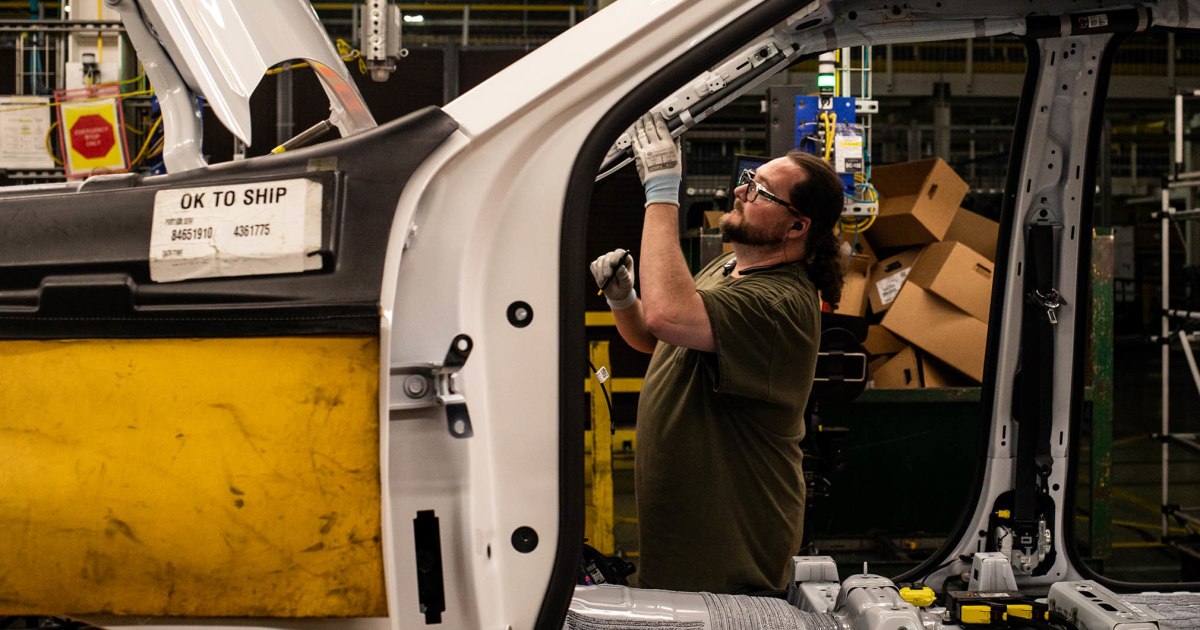Certainly! Here’s a detailed and engaging article discussing the effects of tariffs on American manufacturing following Donald Trump’s presidency, structured with clear paragraphs:
—
### The Shifting Landscape of American Manufacturing Post-Trump
After Donald Trump’s election, the landscape of American manufacturing seemed poised for a resurgence. Craig Souser, CEO of JLS, a family-owned manufacturing company in Pennsylvania, anticipated a boom in demand for his robotics systems used in food packaging. Instead, he faced rising costs and declining demand that prompted him to delay investments and consider international manufacturing options.
“It’s been the most bizarre roller-coaster ride,” Souser remarked, reflecting on the unexpected downturn. His initial enthusiasm for the year was deflated, leaving him puzzled about the drastic shift in business conditions. JLS is not the only company grappling with these issues; many have felt the bite of the tariffs that were meant to protect and bolster American industry.
### Tariffs: Intent vs. Impact
Since taking office, Trump has implemented a series of tariffs aimed at revitalizing American manufacturing by shielding domestic businesses from lower-cost imports. While a few sectors, like pharmaceuticals and automotive, have announced expansions in U.S. manufacturing as a direct response, many existing U.S. manufacturers report no benefits.
The tariffs have instead led to increased costs for raw materials and machinery—an unforeseen consequence that has stymied production. This has created a paradox where tariff protections have not translated into competitive advantages but rather hindered domestic firms by inflating their operational costs.
### Declines in Manufacturing Activity
Recent surveys, including one by the Institute for Supply Management, highlight a decline in manufacturing activity, marking its lowest point in five months due to heightened costs and decreased revenues. Tim Fiore, chair of the ISM’s manufacturing survey committee, noted that when revenue plummets, companies struggle to meet payroll and supplier demands, leading to potential layoffs and cutbacks.
The situation escalated in April when export orders fell to critically low levels, evoking memories of the Great Recession. Echoing these sentiments, Fiore emphasized the disconnect between rising input costs and stagnant demand.
### The Burden of Increased Costs
For manufacturers like Souser, the tariffs have added significant financial strain. He faces a 10% tariff on essential robotics equipment imported from Europe, a cost he is compelled to pass on to his customers. As demand wanes and production costs rise, the sustainability of his business model comes into question. Similar challenges are echoed by Scott Livingston, CEO of Horst Engineering, who has seen input costs skyrocket without the ability to adjust prices for long-term contracts with clients in aerospace and defense sectors.
This scenario underscores a critical point: companies are caught in a bind, where higher costs for essential materials and machinery jeopardize their ability to remain competitive while fulfilling contracts.
### Exemptions and Requests
Compounding the problem, businesses have inundated the U.S. trade representative with requests for tariff exemptions on crucial manufacturing equipment. Major corporations like Tesla and Ford have filed for exemptions to facilitate the production of electric vehicles domestically. This highlights the ongoing struggle many companies face in adapting to the changing tariff landscape.
### Emerging Positives Amidst Challenges
Despite the overarching challenges, some manufacturers see rays of optimism. Drew Greenblatt, president of Marlin Steel Wire in Baltimore, has begun to receive orders from clients who previously sourced products from abroad. This pivot has resulted in increased demand for local steel and manufacturing, presenting an opportunity for growth amid adversity.
Greenblatt acknowledges the paradox: while tariffs increase his costs, they also advantageously shift business toward local production. His willingness to invest in new equipment and hire additional staff illustrates a proactive approach in a turbulent market, signaling potential resilience within certain segments of U.S. manufacturing.
### The Uncertainty of Decision-Making
For many, however, the uncertainty surrounding tariffs complicates long-term planning. Souser’s company is wrestling with whether to maintain manufacturing in Pennsylvania or shift production overseas to mitigate rising costs. The unpredictable nature of trade policies under the Trump administration creates a challenging environment for investment decisions, hindering expansion efforts.
Scott Paul from the Alliance for American Manufacturing has expressed concerns regarding the clarity necessary for businesses to make informed investments. The ongoing discussions in Congress about additional tax breaks for manufacturers add another layer of complexity to the conversation about tariffs and their impact on U.S. manufacturing.
—
This structured exploration captures the multifaceted challenges and potential opportunities facing American manufacturers in the context of evolving tariffs and economic conditions.


